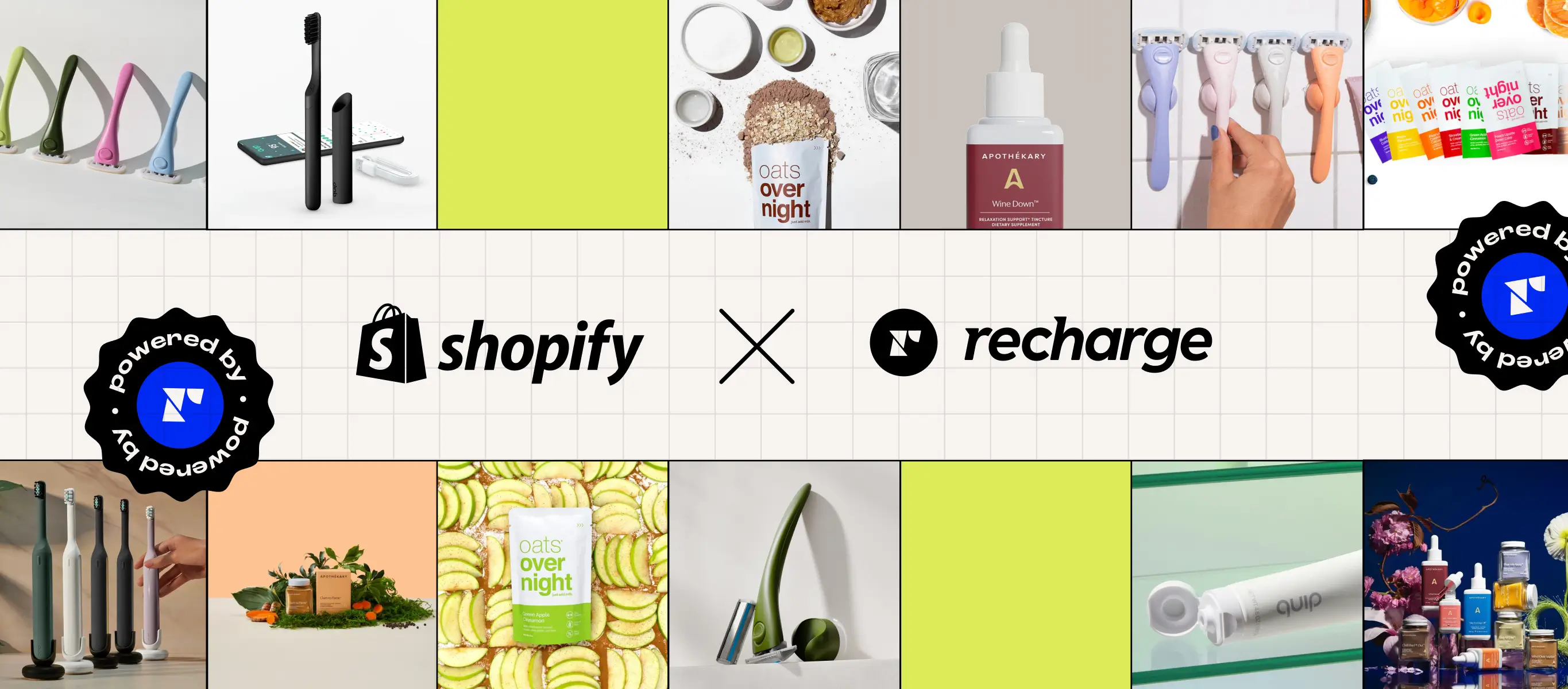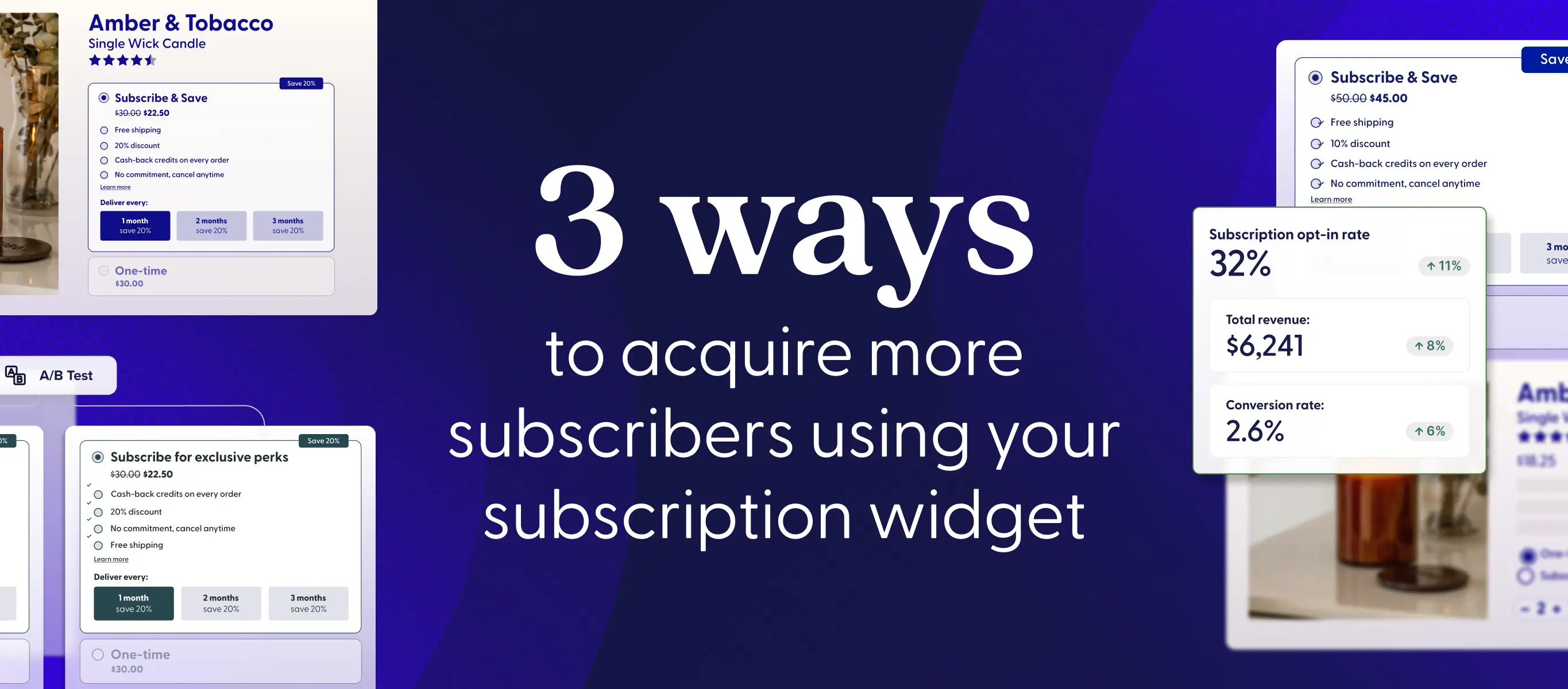Customer lifetime value (LTV) is all about playing the long game. Ensuring that your shoppers don’t just purchase from you once, but return to you again and again, pays dividends for the health of your business. But this requires having a thoughtful LTV strategy in place to keep customers satisfied and coming back to your store.
In this post, we’ll cover why building an LTV strategy is so important for growing and scaling your business in a sustainable way. We’ll also explain the key tactics that top ecommerce merchants use to increase their LTV, along with real-life examples to inspire your own efforts.
Key takeaways
- New customers are expensive to gain with today’s high average customer acquisition cost, making it important to keep existing customers satisfied.
- To cultivate higher customer lifetime value, merchants must have a holistic strategy in place that approaches this goal from a variety of angles.
- Offering recurring purchase options is one key way to boost average customer lifespan and increase customer lifetime value.
4 tactics for a best-in-class customer lifetime value strategy
Increasing your average customer lifetime value depends on having strong customer relationships. Those relationships can require a range of tactics for different businesses, depending on your product vertical, price range, mission, and other factors.
Regardless of the strategies you choose to boost your average customer value and increase customer retention, it’s key to combine multiple tactics. This way, you can more effectively reach different segments of your existing customer base and improve their experiences with a multi-pronged approach.
1. Offer recurring purchase options

One of the most powerful ways to keep customers coming back is offering recurring purchase options, like subscriptions and paid membership programs, which build repeat transactions into their business models. Depending on the products and services you offer, one or both of these options could be a fit for your brand.
In fact, for certain businesses, combining the two models can provide even deeper opportunities for increased LTV. If a segment of a subscription business’s customer base is interested in receiving more perks and benefits for a recurring fee, adding a membership program can increase customer satisfaction and open up another stream of recurring revenue.
Best practices for increasing LTV through subscriptions and memberships include:
- Offering select items as both subscriptions and one-time purchases—this is particularly helpful for customers who want to try an item once before committing to a subscription
- Creating a landing page that emphasizes the benefits and process of your subscription program
- Researching the membership perks and benefits that matter most to your customers, be it discounts, exclusive access to content, or something else
- Making it easy for customers to manage their subscriptions independently with actions like product swaps, order skips, and even cancellations
2. Personalize the customer experience

These days, personalization isn’t an added bonus for customers—it’s the expectation, and a requirement for them to stick with your business long term. After all, by personalizing your recommendations and communications with shoppers, you save them valuable time and energy searching for the items they need.
This is more than just marketing efforts—personalization shows that you deeply understand customers’ preferences and are invested in helping them meet their needs. All of this can result in increased trust in your brand and higher LTV.
To encourage higher LTV with personalization, you can:
- Cross-sell and upsell relevant products to an existing customer based on their previous purchase history or items currently in their shopping cart
- Offer build-a-box options or customizable product bundles that shoppers can tailor to their preferences
- Segment your customer base and provide different groups with offers that are customized to them—for example, offering your membership customers an exclusive discount for renewing their membership in the next billing cycle
3. Surprise & delight customers
Surprise and delight is a marketing concept that focuses on both retaining and acquiring customers by going above and beyond their expectations. Through surprise and delight marketing, brands provide shoppers with unexpected gifts, rewards, or experiences that increase customer LTV and satisfaction.
Two factors are most important when it comes to surprising and delighting customers: timing and the rewards themselves. Providing customers with meaningful perks or gifts when they least expect them makes those gifts feel all the more impactful, strengthening customer relationships.
4. Continuously track, improve & innovate
Any strategies you use to increase LTV should be paired with ones to analyze and track your efforts. This way, you can gain a clear understanding of which tactics are working and which aren’t, then hone your efforts accordingly.
Beyond LTV, metrics to track include:
- Average order value
- Retention
- Churn
- Repeat customer rate
- Average customer lifespan
Alongside any metrics, it’s key to collect customer feedback to provide greater insight into the health of your business. To boost LTV, consider:
- Conducting surveys after customers unsubscribe, asking them why they chose to leave
- Meeting with your CX team to learn more about repeat topics in their chat, email, and phone conversations
- Launching simple surveys that ask customers if they are satisfied with their purchase
Whichever metrics and modes of feedback you choose to monitor, continuously tracking your efforts is key. This will allow you to measure the success of individual campaigns as well as overall patterns in your performance over time.
Increasing lifetime value is a continuous process
Building a best-in-class LTV strategy isn’t a one-and-done task. It’s a constant process, and one that should continue to evolve over time as your business and customer base grow.
By approaching this metric from a variety of different angles, measuring it with multiple metrics, and collecting customer feedback around it, you can gain deep insights into your business performance. With this knowledge, you can continuously optimize your strategy over time to deliver better experiences for your customers that keep them with your business longer.



